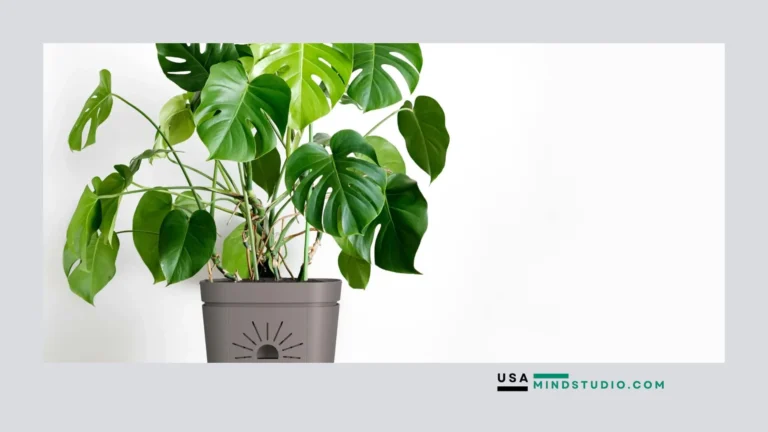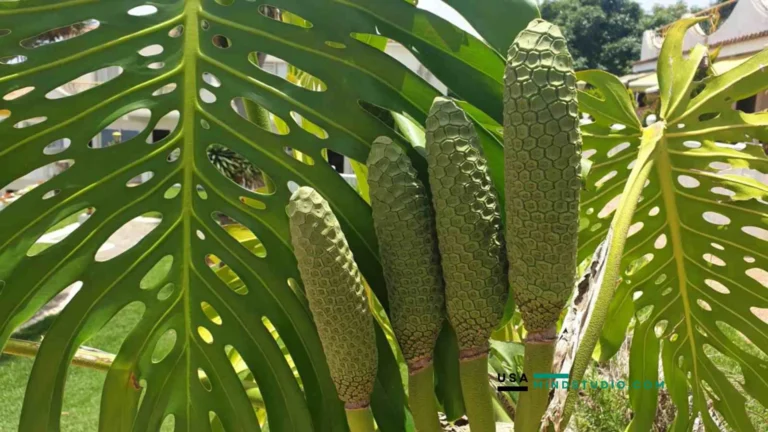
Is Monstera an annual or perennial plant? Let’s clear up this common question right awayMonstera is a perennial plant, meaning it can live and thrive for many years with proper care. Unlike annual plants that complete their lifecycle in a single growing season, Monstera deliciosa is built for the long haul. With its robust root system and remarkable ability to adapt to different seasons, your Monstera can be a lifelong companion in your indoor jungle. Whether you’re a new plant parent or an experienced enthusiast, understanding your Monstera’s perennial nature is crucial for its long-term success. In this comprehensive guide, we’ll explore the fascinating lifecycle of Monstera plants, from their genetic makeup to their growth patterns, and share expert tips to help your plant flourish year after year. Ready to unlock the secrets of your Monstera’s longevity?
Key Takeaways:
- Monstera deliciosa, also known as the Swiss cheese plant or split-leaf philodendron, is a perennial plant that can thrive for many years with proper care.
- Unlike annual plants that complete their lifecycle in a single growing season, Monstera plants continue growing and developing year after year.
- As a member of the arum plant family, Monstera showcases distinctive features like heart-shaped split leaves and aerial roots that contribute to its perennial status.
- These tropical plants require specific care conditions, including well-drained peat-based soil, proper humidity levels, and regular fertilization to maintain their health.
- While Monstera may experience dormant periods during cooler climates, they maintain their perennial nature through genetic markers that enable long-term survival.
Defining Annual vs Perennial Plants
Understanding Annual Plants
Annual plants complete their entire life cycle within a single growing season. These plants germinate, grow, flower, produce seeds, and die all in one year. Think of them as nature’s sprinters – they put all their energy into rapid growth and reproduction before their time is up. Common examples include marigolds, zinnias, and many vegetable plants like tomatoes and peppers.
Characteristics of Perennial Plants
Perennial plants, on the other hand, are nature’s marathon runners. They live for multiple years, with their roots and some parts of the plant surviving through winter dormancy. Each spring, they emerge from their dormant state to produce new growth. Unlike annuals, perennials focus on establishing strong root systems and steady, sustained growth over many seasons.
Key Differences in Growth Patterns
The main distinction between these plant types lies in their survival strategies. Annual plants invest heavily in seed production to ensure species continuation, while perennials allocate resources to develop robust root systems and energy storage organs. This fundamental difference affects everything from their growth rate to their care requirements.
Life Cycle Duration
While annuals complete their lifecycle in months, perennials can live for years or even decades. Some perennials, like trees and shrubs, can survive for hundreds of years. This extended lifespan allows them to establish complex relationships with their environment and develop more sophisticated survival mechanisms.
💡 Key Takeaway: Annual plants complete their lifecycle in one season, while perennials live for multiple years, with distinct growth patterns and survival strategies that affect their care requirements and longevity.
Monstera’s Classification as a Perennial
Monstera deliciosa, with its iconic split leaves and climbing nature, belongs firmly in the perennial plant category. Unlike annual plants that complete their lifecycle in a single growing season, Monstera can live and thrive for decades when properly cared for.
Genetic Markers of Perennial Growth
The perennial nature of Monstera is deeply rooted in its genetic makeup. These plants possess specific genes that enable continuous growth and development throughout their lifetime. Their DNA contains instructions for sustained cell division and tissue regeneration, allowing them to maintain vitality year after year.
Long-term Growth Pattern
Monstera exhibits a distinctive growth pattern characteristic of perennial plants. Rather than rushing to produce seeds and die like annuals, these plants focus on steady, sustainable growth. They develop strong woody stems, extensive root systems, and continue to produce new leaves throughout their life cycle.
Seasonal Adaptations
As a perennial, Monstera has evolved to handle seasonal changes effectively. During winter months, the plant may enter a period of slower growth, but it doesn’t die back completely. Instead, it conserves energy and maintains its existing structure, ready to resume active growth when conditions improve.
Root System Development
The extensive root system of Monstera plays a crucial role in its perennial classification. Both the soil-bound and aerial roots contribute to the plant’s longevity by providing stable nutrient uptake and structural support. This robust root network allows the plant to sustain itself over many years.
Reproductive Strategy
Unlike annuals that rush to produce seeds before dying, Monstera takes a more measured approach to reproduction. These plants can take several years to reach flowering maturity, and when they do flower, it’s just one part of their ongoing life cycle rather than a final act.
💡 Key Takeaway: Monstera’s classification as a perennial is supported by its genetic makeup, sustained growth patterns, seasonal adaptability, extensive root system, and long-term reproductive strategy, enabling it to thrive for many years.
Natural Habitat and Growth Patterns
In the lush rainforests of Central and South America, Monstera plants thrive in their natural habitat, growing as epiphytes that climb up tree trunks and other vertical surfaces. These remarkable plants have evolved to perfectly adapt to their environment over millions of years.
Growth in Natural Settings
Monstera plants start their journey as small seedlings on the forest floor, gradually making their way towards the canopy. They use their aerial roots to attach to tree bark, allowing them to climb higher in search of better light conditions. In nature, these plants can reach impressive heights of up to 70 feet.
The growth pattern of Monstera is heavily influenced by the tropical climate they call home. With consistent warmth and humidity levels around 60-80%, these plants maintain steady growth throughout the year, only slowing slightly during cooler periods.
Seasonal Growth Cycles
Unlike annual plants that complete their lifecycle in one season, Monstera exhibits distinct growth patterns across different seasons. During spring and summer, they experience rapid growth with new leaves emerging every 4-6 weeks. Fall and winter bring a natural slowdown, though the plant remains evergreen.
Adaptation Mechanisms
One of the most fascinating aspects of Monstera’s growth is their ability to adapt to changing light conditions. As they climb higher in the forest canopy, their leaves develop larger fenestrations (holes) to allow light to reach lower leaves. This unique adaptation ensures optimal photosynthesis throughout the plant.
The plant’s aerial roots serve multiple purposes – from anchoring to absorbing nutrients and moisture from the air. This efficient system allows Monstera to thrive even in nutrient-poor conditions, contributing to their long-term survival strategy.
💡 Key Takeaway: Monstera plants are naturally occurring in tropical rainforests, displaying adaptive growth patterns through climbing behavior, seasonal cycles, and unique features like aerial roots and leaf fenestrations for optimal survival.
Popular Monstera Varieties
Monstera plants come in various stunning varieties, each with its unique characteristics and growth patterns. Let’s explore some of the most sought-after types that plant enthusiasts love to collect.
Monstera Deliciosa
The classic Swiss Cheese Plant is the most recognized variety, featuring large, glossy leaves with distinctive natural holes. As a perennial climber, it can reach impressive heights of up to 70 feet in its natural habitat, though indoor specimens typically stay more manageable.
Monstera Adansonii
Often called the Swiss Cheese Vine, this variety sports smaller leaves with more holes than its deliciosa cousin. Its vining nature makes it perfect for hanging baskets or climbing poles, and its perennial growth ensures years of enjoyment.
Monstera Thai Constellation
This highly coveted variety showcases stunning cream-colored variegation splashed across its leaves. The pattern is stable due to tissue culture propagation, making it a reliable choice for collectors seeking unique foliage.
Monstera Albo Borsigiana
Known for its striking white variegation, this variety is particularly rare and sought-after. Each leaf displays a unique pattern of white and green, making every plant one-of-a-kind. As a perennial, it maintains its beautiful variegation throughout its life.
Monstera Peru
This unique variety features thick, leathery leaves without fenestrations. Its compact growth habit and glossy foliage make it an excellent choice for smaller spaces, while still offering the longevity of other Monstera varieties.
Monstera Dubia
A lesser-known but equally fascinating variety, the Dubia starts with small, heart-shaped leaves that grow larger and develop splits as the plant matures. Its climbing nature and unique juvenile form make it a conversation starter.
💡 Key Takeaway: Monstera plants offer diverse varieties with unique characteristics, from the classic Deliciosa to rare variegated forms, all sharing the perennial nature that makes them long-lasting additions to any collection.
Long-term Care Requirements
Caring for your Monstera as a perennial plant requires consistent attention and understanding of its long-term needs. Unlike annual plants that complete their lifecycle in one season, Monsteras need ongoing care to thrive for many years.
Essential Care Requirements
Maintaining proper light conditions is crucial for your Monstera’s longevity. Place your plant in bright, indirect sunlight to prevent leaf burn while ensuring adequate light for growth. A north or east-facing window often provides ideal lighting conditions.
Water your Monstera when the top 2-3 inches of soil feels dry. Establish a consistent watering schedule, but adjust it based on seasonal changes. During winter, reduce watering frequency as the plant enters a period of slower growth.
Use a well-draining potting mix enriched with organic matter to support healthy root development. Repot your Monstera every 2-3 years to prevent root binding and refresh the soil nutrients. Choose a pot that’s 2-3 inches larger than the current one to accommodate growth.
Supporting Long-term Growth
Regular fertilization is essential for sustained growth. Apply a balanced, water-soluble fertilizer monthly during the growing season (spring and summer). Reduce fertilization during fall and winter when growth naturally slows.
Monitor humidity levels around your plant. Monsteras thrive in environments with 60-80% humidity. Use a humidifier or pebble tray to maintain optimal moisture levels, especially during dry winter months.
Provide proper support for climbing as your Monstera grows. Install a moss pole or trellis when the plant is young, allowing it to develop naturally as an epiphyte. This supports larger leaf development and healthier growth patterns.
Prune yellowing or damaged leaves to maintain plant health and appearance. Regular cleaning of the leaves helps prevent pest infestations and ensures efficient photosynthesis. Inspect your plant weekly for signs of problems like pest damage or disease.
💡 Key Takeaway: Successful long-term Monstera care requires consistent attention to light, water, soil, humidity, and support needs, along with regular maintenance practices to ensure healthy growth for years to come.
Seasonal Changes and Adaptations
Understanding Monstera’s Seasonal Rhythm
Monstera plants display remarkable adaptability throughout the year, adjusting their growth patterns to match seasonal changes. During spring and summer, these tropical beauties enter their active growth phase, producing new leaves and showing increased aerial root development.
Growth Patterns Through Seasons
In warmer months, Monstera exhibits vigorous growth with faster leaf production and more pronounced fenestration (leaf holes). As temperatures drop in fall and winter, the plant naturally slows its growth, entering a period of semi-dormancy to conserve energy.
Temperature Adaptations
While Monstera thrives in temperatures between 65-85°F (18-29°C), it can withstand brief exposure to cooler temperatures. The plant responds to temperature fluctuations by adjusting its metabolic rate and water consumption, demonstrating its evolutionary adaptability.
Light Requirements Across Seasons
During shorter winter days, Monstera adapts to reduced light conditions by slowing photosynthesis. You might notice slower growth and slightly smaller leaves during this period. In summer, the plant capitalizes on increased light availability by producing larger, more fenestrated leaves.
Watering Adjustments
Seasonal changes directly impact Monstera’s water needs. The plant requires more frequent watering during active growth periods in spring and summer. During winter dormancy, reduce watering frequency to prevent root rot, as the plant uses less water in cooler temperatures.
💡 Key Takeaway: Monstera plants actively adapt to seasonal changes by modifying their growth rate, water consumption, and energy usage, showcasing their resilience as perennial plants that thrive year-round with proper care.
Common Challenges and Solutions
Growing Monstera as a perennial plant comes with its unique set of challenges. Let’s explore some common issues and their practical solutions to help your plant thrive year after year.
Yellowing Leaves
When your Monstera’s leaves start turning yellow, it’s often a sign of overwatering or poor drainage. To fix this, check the soil moisture before watering and ensure your pot has adequate drainage holes. Only water when the top 2-3 inches of soil feels dry to touch.
Slow Growth
If your Monstera isn’t growing as expected, it might need more light or nutrients. Place it in a spot with bright, indirect sunlight and feed it with a balanced fertilizer during the growing season (spring and summer). Remember to dilute the fertilizer to half-strength to prevent root burn.
Root Rot
This common issue occurs when roots sit in waterlogged soil for too long. If you notice mushy, brown roots, remove the affected parts with clean scissors. Repot the plant in fresh, well-draining potting mix and reduce watering frequency.
Lack of Fenestration
When Monstera leaves aren’t developing their characteristic holes and splits, insufficient light is usually the culprit. Gradually move your plant to a brighter location, but avoid direct sunlight which can scorch the leaves.
Pest Infestations
Spider mites and mealybugs can attack your Monstera. Regularly inspect the leaves, especially the undersides. If you spot pests, wipe the leaves with neem oil solution or insecticidal soap. Maintain good air circulation to prevent future infestations.
Brown Leaf Tips
Crispy brown tips often indicate low humidity or mineral buildup from tap water. Use a humidity tray or run a humidifier nearby. Consider using filtered water or letting tap water sit out overnight before watering your plant.
💡 Key Takeaway: Most Monstera challenges stem from improper watering, lighting, or humidity levels. Regular monitoring and quick action can prevent major issues and ensure your perennial plant thrives long-term.
Conclusion
As we’ve explored, Monstera’s perennial nature makes it a remarkable long-term companion in your indoor garden. Unlike annual plants, these tropical beauties are genetically programmed to thrive for years, rewarding dedicated plant parents with stunning growth and iconic split leaves. Understanding this fundamental aspect of your Monstera deliciosa helps create an effective care routine that supports its natural lifecycle. Remember, your Monstera’s longevity depends on providing the right conditions – from proper humidity levels to well-drained soil and adequate support structures. Whether you’re growing a classic Swiss cheese plant or an exotic Thai Constellation, these care principles remain consistent. By maintaining optimal growing conditions and staying vigilant against common issues like fungal diseases and spider mites, you’re setting your plant up for years of healthy growth. Ready to embark on your Monstera journey? Start implementing these care tips today, and watch your perennial friend transform into a stunning centerpiece of your indoor jungle. Share your Monstera success stories and join our growing community of plant enthusiasts!
FAQs
Can Monstera plants survive in low light conditions?
While Monstera can tolerate lower light, they thrive best in bright, indirect light. In low light conditions, growth will be slower, and the iconic leaf splits may not develop properly. To maintain healthy growth, place your Monstera near a north or east-facing window with filtered light.
How often should I repot my Monstera plant?
Young Monstera plants typically need repotting every 12-18 months, while mature plants can go 2-3 years between repotting. Watch for signs like roots growing through drainage holes or slowed growth. Use well-drained peat-based soil and choose a pot 2-3 inches larger than the current one.
Why are my Monstera’s leaves not splitting?
Leaf splitting in Monstera is related to plant maturity and environmental conditions. If your plant isn’t developing splits (fenestrations), it might be too young, receiving insufficient light, or lacking proper humidity levels. Ensure optimal growing conditions and be patient, as splitting typically begins after 2-3 years.
Can I grow Monstera outdoors year-round?
Monstera can grow outdoors year-round only in warmer regions (USDA zones 10-12) with high humidity levels. In cooler climates, they should be brought indoors when temperatures drop below 50°F (10°C) to protect them from frost damage and maintain their tropical nature.
How do I prevent and treat spider mites on my Monstera?
Prevent spider mites by maintaining proper humidity and regularly cleaning leaves. If infested, isolate the plant and treat it with natural pest control methods like neem oil or insecticidal soap. Regular misting and proper air circulation can help prevent future infestations.
What’s the best way to propagate a Monstera plant?
The most successful method for Monstera propagation is air layering or stem cuttings with at least one node and aerial root. Place the cutting in water or sphagnum moss until roots develop, then transfer to well-draining soil. Maintain high humidity during the rooting process for best results.


